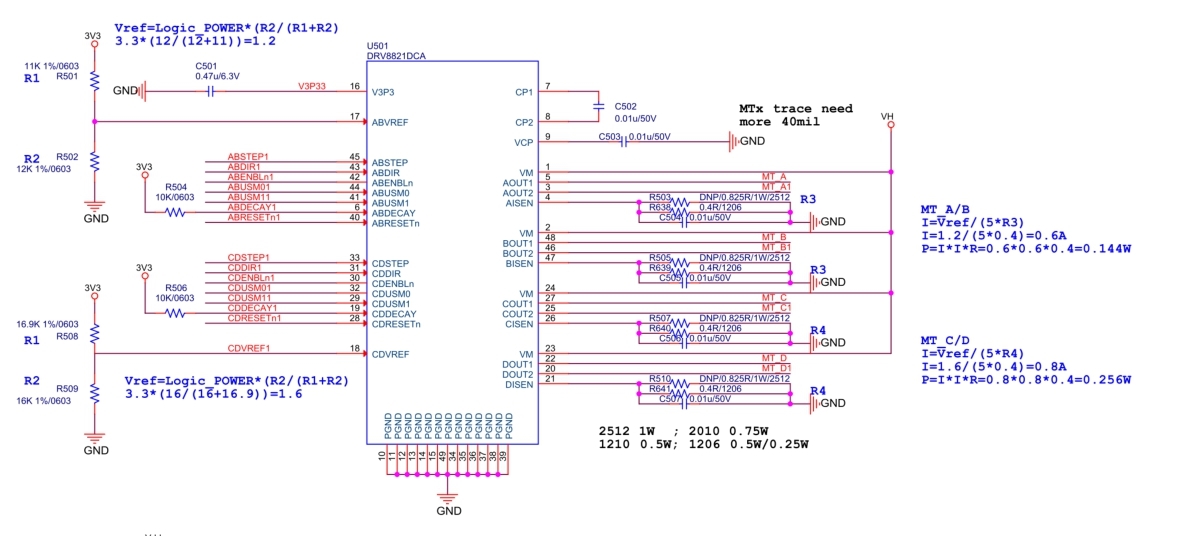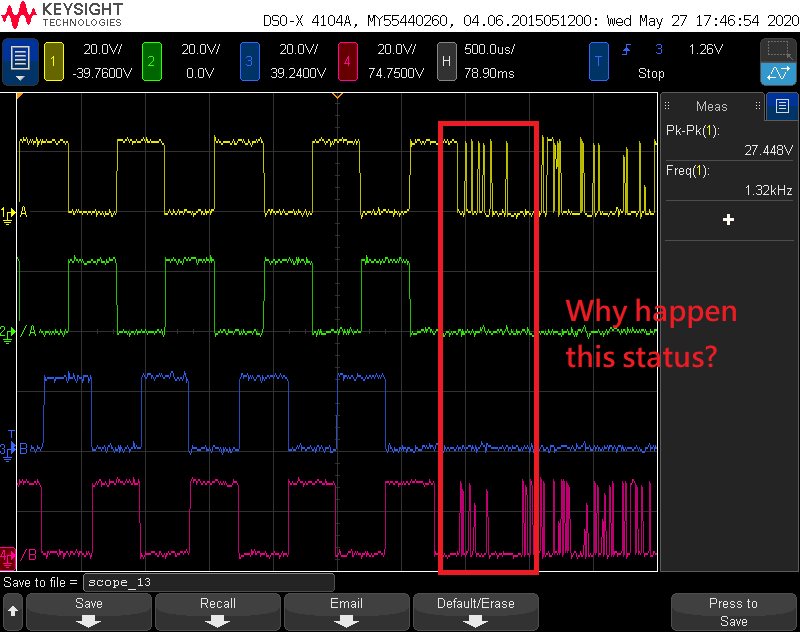Other Parts Discussed in Thread: DRV8823
Hello sir:
About DRV8821 control, we meet a problem need help.
The below picture is catch from Scope and you can find the B Bridge is slow 1/4 wave of A Bridge.
From DRV8821 datasheet, I can find the "Figure 10. Block Diagram" has a "APHASE/BPHASE" control, but I don`t know how to control it.
Please tell me how to control then A/B Bridge can start on same time.
Below picture is my schematic, provide for reference.
Thank you.




